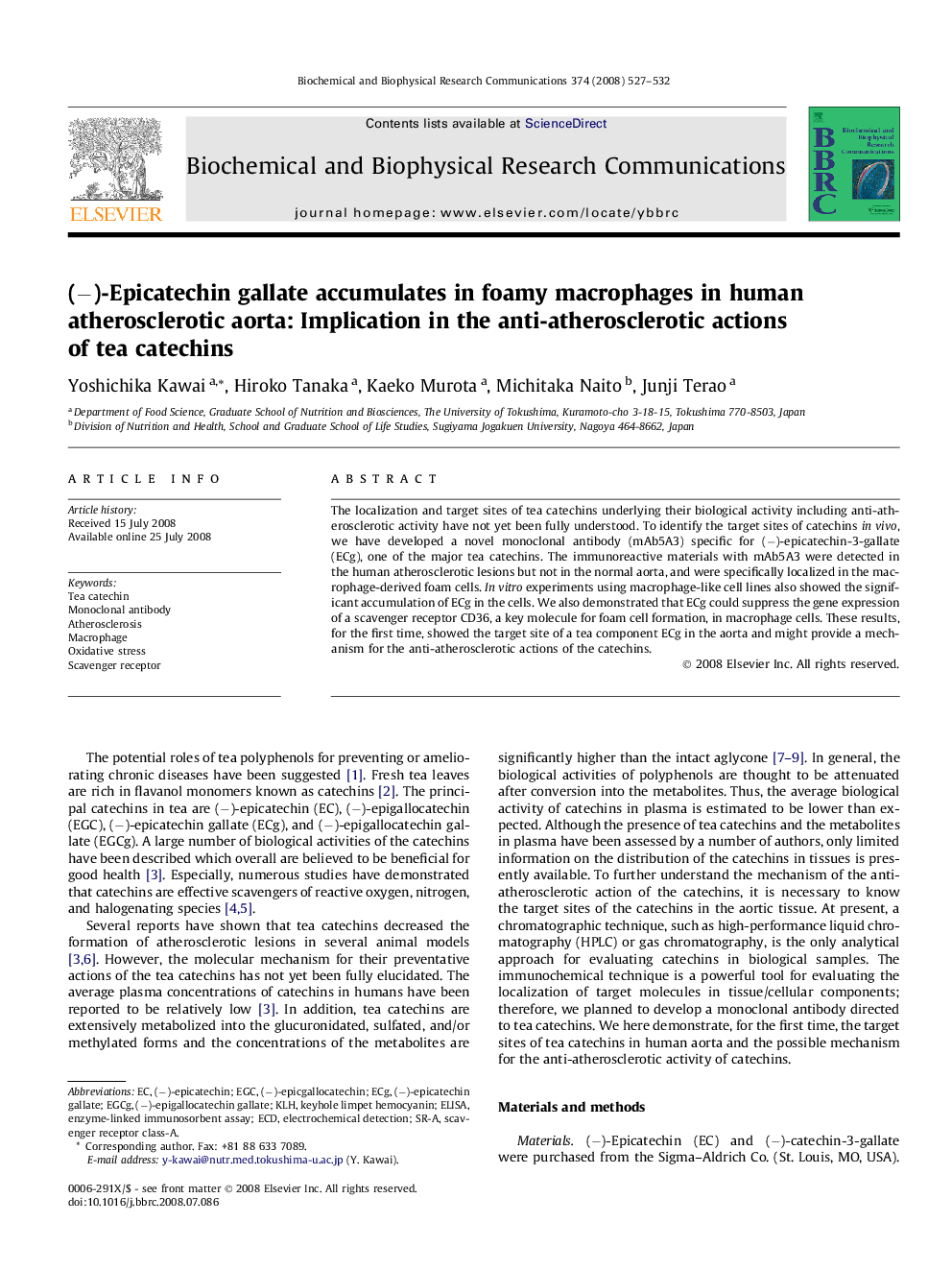| Article ID | Journal | Published Year | Pages | File Type |
|---|---|---|---|---|
| 1935454 | Biochemical and Biophysical Research Communications | 2008 | 6 Pages |
The localization and target sites of tea catechins underlying their biological activity including anti-atherosclerotic activity have not yet been fully understood. To identify the target sites of catechins in vivo, we have developed a novel monoclonal antibody (mAb5A3) specific for (−)-epicatechin-3-gallate (ECg), one of the major tea catechins. The immunoreactive materials with mAb5A3 were detected in the human atherosclerotic lesions but not in the normal aorta, and were specifically localized in the macrophage-derived foam cells. In vitro experiments using macrophage-like cell lines also showed the significant accumulation of ECg in the cells. We also demonstrated that ECg could suppress the gene expression of a scavenger receptor CD36, a key molecule for foam cell formation, in macrophage cells. These results, for the first time, showed the target site of a tea component ECg in the aorta and might provide a mechanism for the anti-atherosclerotic actions of the catechins.
